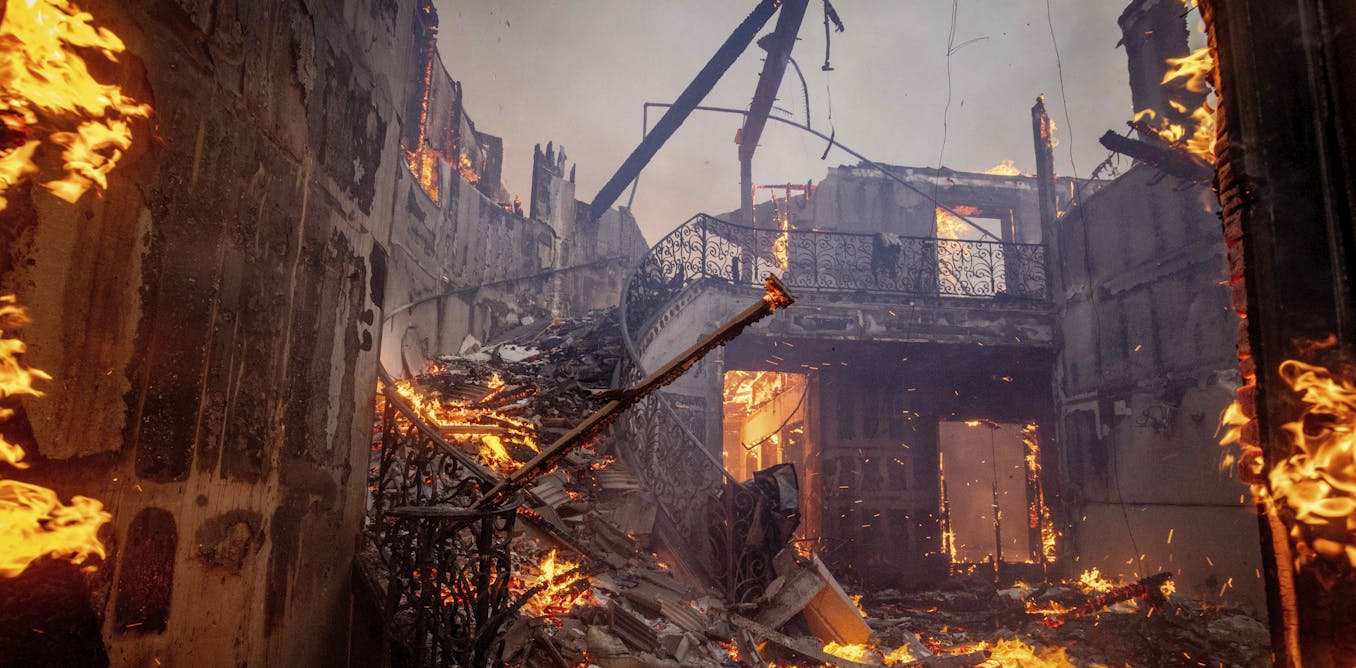Unraveling the Fury: Why LA’s Wildfires Are Becoming More Devastating
The recent surge in wildfires across Los Angeles has left communities reeling, with the devastation reaching unprecedented levels. As flames consume vast areas of land and threaten homes and wildlife, it becomes crucial to explore the multifaceted factors contributing to their increasing intensity. From climate change to urban development, understanding these elements is essential for mitigating future disasters and enhancing community resilience.
The Role of Climate Change
One of the primary drivers behind the escalating ferocity of LA’s wildfires is climate change. Over the past few decades, California has experienced significant increases in temperature, leading to prolonged droughts and heightened fire risks. According to the California Department of Forestry and Fire Protection, the state has seen an average temperature rise of about 2 degrees Fahrenheit since the 1970s, intensifying dry conditions that make wildfires more likely.
Additionally, climate models predict that these warming trends will continue, with some projections estimating an increase in fire-prone days by up to 50% by 2050. This grim forecast underscores the urgent need for comprehensive climate action to address the root causes of climate change.
Vegetation and Fuel Accumulation
The type and amount of vegetation in the Los Angeles area also play a critical role in wildfire dynamics. Invasive plant species, such as cheatgrass and red brome, have proliferated in the region, creating a dense layer of fuel that can ignite easily. Furthermore, the natural cycle of vegetation growth and die-off, influenced by climate patterns, has led to increased fuel accumulation in many parts of the state.
As vegetation becomes more abundant and dried out due to rising temperatures, the risk of wildfires increases substantially. This accumulation of fuel can lead to more intense and fast-spreading fires, making containment efforts even more challenging.
Urban Development and Wildfire Risk
As Los Angeles continues to expand, urban development encroaches further into wildland areas, creating what is known as the “wildland-urban interface.” This interface is where homes are built adjacent to or within forested areas, increasing the likelihood of structures being threatened by wildfires.
Homes in these areas often lack adequate defensible space, which is critical for protecting them from encroaching flames. Many residents are unaware of the necessary precautions to take, such as maintaining clear zones around their properties or using fire-resistant building materials. This lack of preparedness can exacerbate the damage caused by wildfires.
Wind Patterns and Weather Conditions
Wind patterns in Southern California, particularly the Santa Ana winds, also contribute significantly to the severity of wildfires. These strong, dry winds can propel flames rapidly, transforming a manageable fire into an inferno within minutes. The unpredictability of these winds makes it challenging for firefighting efforts to keep pace with advancing flames.
Furthermore, weather conditions such as low humidity and high temperatures can create a perfect storm for wildfires, increasing the likelihood of ignition and rapid spread. Firefighters often find themselves battling not just the flames but also the elements that fuel them.
Challenges in Containment Efforts
As wildfires grow more intense, containment efforts face a myriad of challenges. Firefighting resources are often stretched thin, especially during peak fire season when multiple blazes can erupt simultaneously. The California firefighting community relies heavily on a combination of ground crews, aerial support, and technology, but even with these resources, the scope of the fires can overwhelm response efforts.
- Resource Allocation: During severe fire seasons, fire departments must prioritize resources, sometimes leaving certain areas vulnerable.
- Terrain Challenges: The rugged landscape of Los Angeles makes accessing certain fire-prone areas difficult for ground crews.
- Evacuation Orders: Rapidly changing fire conditions can necessitate sudden evacuation orders, complicating community safety efforts.
Community Preparedness and Resilience
In light of these escalating challenges, community preparedness is more critical than ever. Local governments and organizations are taking proactive steps to educate residents about wildfire risks and safety measures. Initiatives such as community workshops, evacuation drills, and the distribution of fire safety kits can empower residents to protect themselves and their homes.
Moreover, community resilience can be enhanced through the establishment of firebreaks and controlled burns, which can reduce fuel loads and create safer environments. Collaboration between fire agencies, local governments, and residents is essential to build stronger defenses against future wildfires.
Innovative Solutions and Future Outlook
As LA grapples with the increasing threat of wildfires, innovative solutions are emerging to combat this crisis. Technology plays a pivotal role in modern firefighting strategies, with advancements in satellite monitoring, drone surveillance, and predictive modeling helping agencies anticipate fire behavior and allocate resources more effectively.
Additionally, sustainable land management practices are gaining traction, focusing on restoring ecosystems and reducing the risks associated with wildfires. For instance, reforestation efforts, the removal of invasive species, and the implementation of controlled burns can contribute to healthier landscapes that are less prone to catastrophic fires.
Conclusion
The fury of wildfires in Los Angeles is a complex issue driven by climate change, urban development, and environmental factors. While the challenges posed by these fires are daunting, a combination of community preparedness, innovative solutions, and strategic land management can help mitigate their impact. With concerted efforts from residents, local authorities, and environmental organizations, there is hope for a safer and more resilient future in the face of wildfires. By unraveling the factors contributing to this crisis, we can better equip ourselves to protect our communities and the environment we cherish.
See more Your Daily Weather



